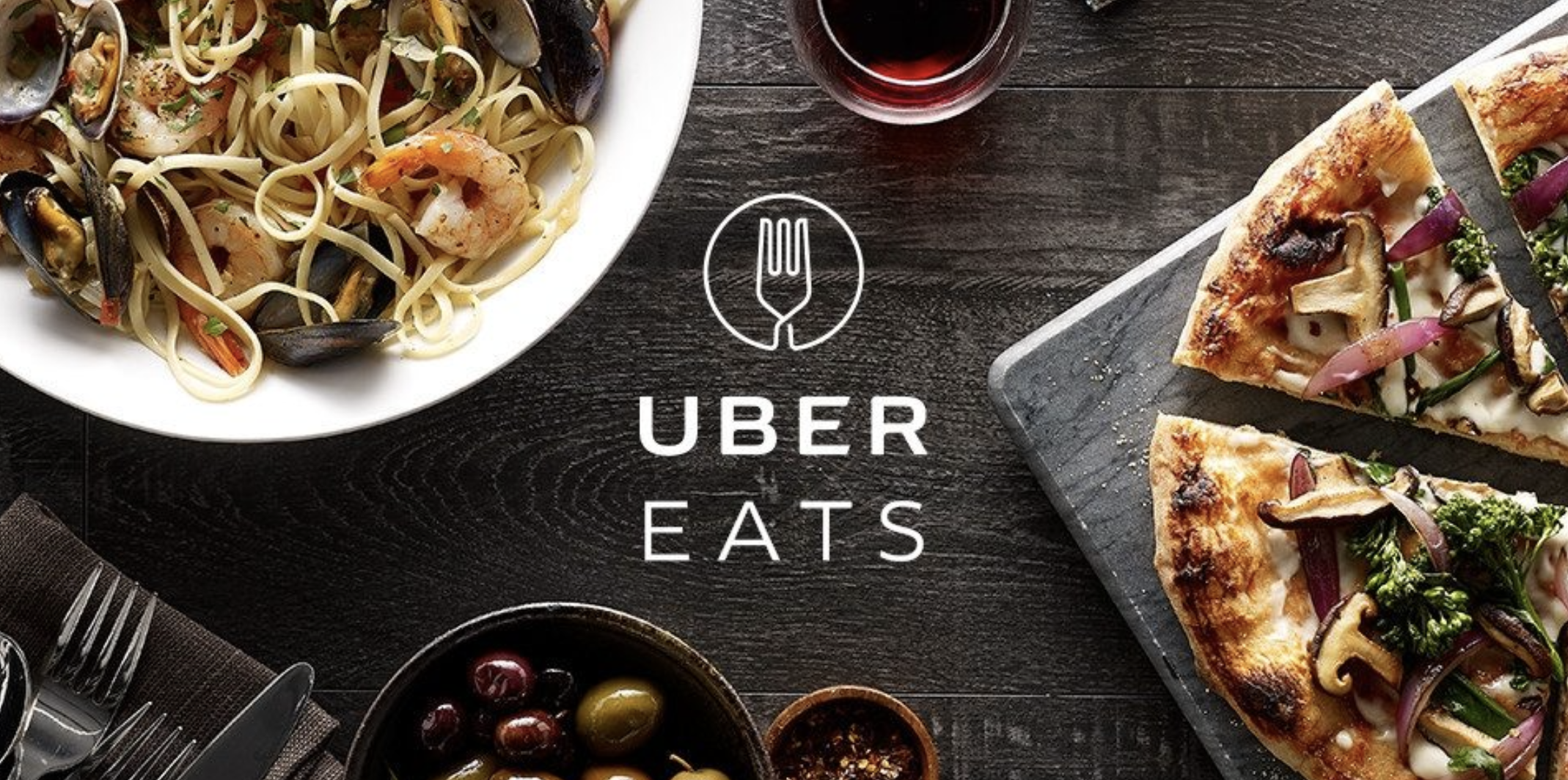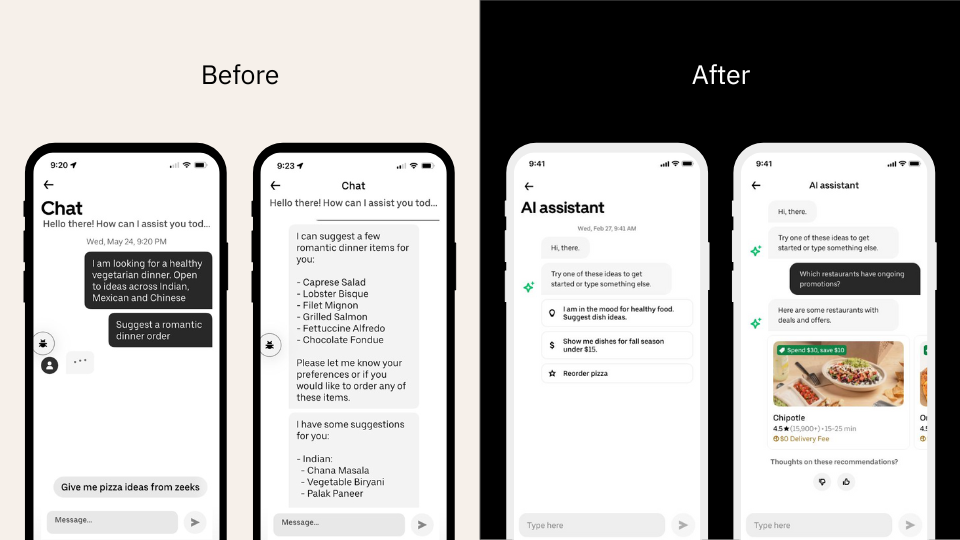Uber Eats AI Assistant
As the Head of Merchant & Ads Design at Uber Eats, I led the design and development of the AI Assistant—a new feature aimed at revolutionizing food ordering and grocery shopping experiences using Conversational AI. I guided a team of UX and Content Designers (including the Engineering team) collaborated with cross-functional stakeholders, and ensured that the product met high standards of usability and innovation. This initiative positioned Uber Eats as a leader in AI-driven user experiences.
The Problem Statement
Business Challenges:
Justifying investment in AI-driven innovation.
Differentiating Uber Eats from competitors with unique features.
Maintaining user trust in data handling.
Grocery shopping and meal planning often involve decision fatigue and lack of inspiration, leading to user frustration. Existing tools provided limited options for dynamic user engagement or personalized assistance, leaving a gap in the market for an innovative solution.
Design Challenges:
Translating complex AI interactions into intuitive user interfaces.
Balancing personalization with privacy.
Ensuring scalability for diverse user needs.
AI Use Case Strategy
I led the design and research teams in formulating and testing key hypotheses related to AI use cases, interaction strategies, and user trust. This involved structured experimentation to uncover how users perceived and interacted with AI, with a focus on aligning design decisions with behavioral insights and mental models.
Through multiple design and usability iterations, we discovered a strong user preference for chat-based over voice-based interactions in this context.
We also found that successful use cases were those closely aligned with how users naturally envisioned leveraging conversational AI for everyday tasks.
The value of the Assistant lies in tasks that are currently hard or not possible to do in Uber Eats. Users want very personalized recommendations based on past behavior and history. GPT-like experiences require high effort. Users want help to shape prompts. The most typed organic query types are open-ended “What should I eat” and “Get me deals”.
These insights were pivotal in shaping the final interaction model and narrowing our product focus.
We learned all of this without writing a single line of code – saving the team months of engg effort.
Design Highlights
The AI assistant was designed to help users pinpoint their exact wants, spark inspiration, narrow down decisions and simplify the process of grocery shopping and more. The feature was unique to Uber Eats, as it allows users to express their desires and needs directly through their own words. The chat interface allows for dynamic interaction, enabling the assistant to ask follow-up questions and precisely match user intents with tailored recommendations through a finely tuned LLM.
Designed a conversational interface that integrated user inputs seamlessly with AI-powered recommendations.
Developed mechanisms for explainable AI to increase user trust.
Introduced modular designs to cater to different user preferences and behaviors.
Leadership Highlights
Exceptional Organization & Planning: Developed a structured and iterative testing plan that aligned closely with the product vision and ensured collaboration across research, design, and engineering. This approach enabled timely pivots based on user feedback and accelerated alignment across functions.
Visionary Leadership: Defined a long-term vision for how conversational AI could transform the grocery shopping experience for Uber Eats. This vision provided clarity for the team and helped drive the shift from voice to chat modality, grounded in real user behavior.
Strategic Alignment for Impact: Prioritized features and use cases based on user mental models and research insights, ensuring that the most meaningful and high-value AI interactions were brought to life. This strategic focus helped streamline product decisions and strengthened stakeholder confidence in the roadmap.


